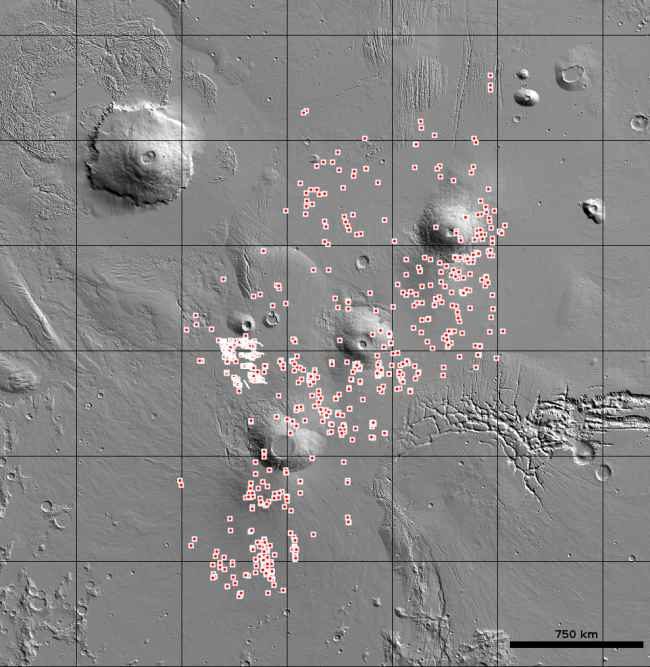
Still, the issue of life on Mars demands new scientific concepts and knowledge concerning where to explore on the Red Planet and what to measure.
Astrobiologists and other experts tackled some of these issues last November during a conference at the National Cave and Karst Research Institute in Carlsbad, New Mexico.
On the meeting agenda was a discussion of how best to test for extant life on Mars, with or without the benefit of collection systems. Such systems include a complex and pricey Mars sample-return effort that officially kicks off this summer with the launch of NASA's Mars 2020 rover.
Geological environments
Conference attendees generally agreed that the best places to look for extant Mars life are in the deep subsurface caves, and in salt and ice.
While the cold, dry surface of Mars, with its harsh radiation environment, is widely considered to be uninhabitable, the subsurface has been hypothesized to be a viable, long-lived habitable environment, protected from the punishing surface conditions of Mars and a place where water could be stable.
Vlada Stamenković, a research scientist at NASA's Jet Propulsion Laboratory in Pasadena, California, backed the underground approach at the conference.
"The surface of Mars is a very oxidizing, radiation-heavy environment where liquid water is not really stable for an extended amount of time," Stamenković said. "It's the worst place to look for life-sites on Mars. Groundwater might be the only habitat for extant life on Mars, if it still exists today."
To that end, Stamenković outlined at the meeting two potential Mars lander missions: Volatiles And Life: Key Reconnaissance & In-situ Exploration (VALKYRIE) and TH2OR (Transmissive H2O Reconnaissance), a small impact-lander platform that would remotely sense and study liquid subsurface groundwater via low-frequency electromagnetic waves. (Stamenković is the TH2OR principal investigator.)
Lava tubes, cave entrances
Over the years, researchers have spotted pit craters on the surface of Mars. These features are locations where the roof of a lava tube has partially collapsed and created a "skylight."
Researchers at the meeting pointed out that Mars-circling spacecraft have imaged numerous potential cave entrances. Shielded underground as they are, could lava tubes be prime microbial real estate on Mars?
Here on Earth, cave-exploring scientists have gathered evidence of microbial activity in the form of biofilms, slime, and microbially induced or precipitated minerals. Conditions in caves, the researchers have found, are typically far different, more consistent and more benign than on the surface.
Systematic campaign
"It's pretty clear to me that there's much to be done to seek extant life, and certainly extinct life, in a variety of environments on Mars," said Penny Boston, senior advisor for science integration at NASA's Ames Research Center in Mountain View, California.
As an astrobiologist, Boston has been a "cave diver" for some 25 years. "I think we all recognize that there's not just a single way to go" to search for life on Mars, she told Space.com.
"My own personal opinion is that it's time to line up missions with what the community is seeing in terms of return on investment versus the difficulty of accessing any particular environment," Boston said. "It has been shown, with Mars, a campaign to systematically look for the water and now probe other aspects of habitability have yielded a tremendous amount of science."
And caves aren't as dangerous to explore as some people think, she added.
"I think people are often leery of the idea, because they may think of caves as mines. Mines are dangerous because we've recently made those mines and they are shored up by human structure," Boston said.
"But in the case of natural caves, they have had geologically long periods of time to stabilize," she added. "It's probably more likely that a cathedral is going to collapse on you than a natural cave. There are some exceptions to this. Obviously, caves in a pretty seismically active area, you'd have to be more leery."
"Air apparent" biosignature
Caves are some of the most exciting environments in the search for signs of present and past life on Mars, said Kevin Webster, a research scientist at the Planetary Science Institute in Tucson, Arizona.
Webster is studying cave air as a biosignature, looking into the concentration of trace gases in caves he has measured across the United States.
When thinking about caves on Mars, a biological signature might come in the form of the removal of reactive components from the atmosphere, Webster explained. Researchers have found several candidates for lava tube caves on Mars and continue to detect them. The exploration and the measurement of cave air on Mars might be pursued through either remote means or on-the-spot methods, he said.
The Small High-Impact Energy Landing Device (SHIELD) is a proposed new technology for inexpensively bringing small payloads to the Martian surface. (Image credit: JPL/Corby Waste)How life may be operating
Biosignatures in the air offer a way to search for life that does not depend on genetics "but something that is broad enough to how life may be operating, even if it doesn't share our same biochemistry," Webster said.
So, Martian caves should be pursued, Webster said.
"I have spent my time trying to develop one particular biosignature that people may use in the search for life," Webster told Space.com. "I'm trying to understand how cave air differs from that of the atmosphere on Earth and why we might want to look at that on Mars. I love seeing new ways to find life. That's really exciting and in the vein of what I've been doing."
Leonard David is the author of the book "Moon Rush: The New Space Race," published by National Geographic in May 2019. A longtime writer for Space.com, David has been reporting on the space industry for more than five decades. Follow us on Twitter @Spacedotcom or Facebook.



Reader Comments
to our Newsletter